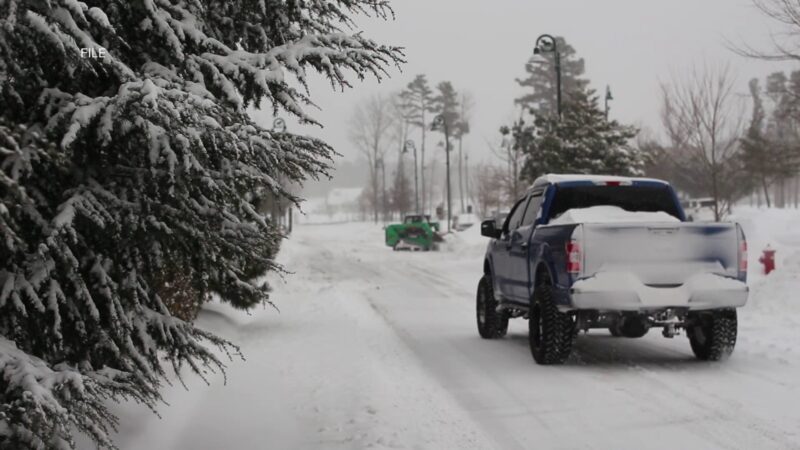Arkansas Weather: Arkansas, also known as the Natural State is located in the southern region of the United States. It is known for its beautiful landscapes, outdoor recreation, and diverse climate. The state has a humid subtropical climate, which means it experiences hot and humid summers and mild winters. Arkansas is also prone to severe weather events such as tornadoes, thunderstorms, and floods. In this article, we will take an in-depth look at Arkansas weather and everything you need to know to stay safe and prepared.
Geography and Climate
Arkansas is located in the southern region of the United States and is bordered by six states: Missouri to the north, Tennessee to the northeast, Mississippi to the east, Louisiana to the south, Texas to the southwest, and Oklahoma to the west. The state has a diverse geography that includes mountains, forests, rivers, and lakes. The Ozark Mountains cover the northern part of the state, while the Ouachita Mountains extend from the west to the southeast.
Arkansas has a humid subtropical climate, which means it experiences four distinct seasons. Summers are hot and humid, with temperatures ranging from 80°F to 90°F. The average high temperature in July, the warmest month of the year, is 92°F, while the average low temperature in January, the coldest month of the year, is 29°F. Winters are mild, with occasional cold snaps and snowfall. The state receives an average of 6 inches of snow per year.
Spring and fall are transition seasons and are characterized by mild temperatures and occasional thunderstorms. Arkansas is also prone to severe weather events such as tornadoes, thunderstorms, and floods.
Severe Weather
Arkansas is located in Tornado Alley, which is an area in the central United States that is prone to tornadoes. Tornadoes are powerful and destructive storms that can cause significant damage to buildings and infrastructure. In Arkansas, tornadoes are most common in the spring and early summer months. The peak tornado season in Arkansas is from March to May.
It is essential to have a plan in place in case of a tornado. The first step is to identify a safe place in your home or workplace where you can take shelter during a tornado. This could be a basement or an interior room on the lowest level of the building. You should also have an emergency kit ready that includes food, water, first aid supplies, and a battery-powered radio.
In addition to tornadoes, Arkansas is also prone to thunderstorms and floods. Thunderstorms are common in the spring and summer months and can produce lightning, high winds, and hail. Flash floods are also a significant risk in Arkansas, especially in areas with poor drainage. It is essential to be aware of weather alerts and warnings and to take appropriate action to stay safe.
Preparation and Safety Tips
Preparing for severe weather is essential in Arkansas. Here are some tips to help you stay safe:
- Stay informed: Keep up-to-date with weather alerts and warnings from local news sources and the National Weather Service.
- Have an emergency kit: Prepare an emergency kit with food, water, first aid supplies, and a battery-powered radio.
- Identify a safe place: Identify a safe place in your home or workplace where you can take shelter during a tornado or severe thunderstorm.
- Secure outdoor objects: Secure outdoor objects such as patio furniture, trash cans, and lawn equipment to prevent them from becoming projectiles during a storm.
- Stay indoors: If you hear thunder or see lightning, stay indoors and avoid activities such as swimming or golfing.
- Be prepared to evacuate: If you live in a flood-prone area, be prepared to evacuate quickly if necessary.
Weather Hazards
Arkansas is known for its diverse climate, but it is also known for its weather hazards. Some of the most common hazards include tornadoes, thunderstorms, and floods.
Tornadoes
Tornadoes are a significant threat to Arkansas, especially during the spring and early summer months. Tornadoes are violent and can cause significant damage to buildings and infrastructure. In Arkansas, tornadoes are most common in the northwestern part of the state.
It is essential to have a plan in place in case of a tornado. Identify a safe place in your home or workplace where you can take shelter. This could be a basement or an interior room on the lowest level of the building. If you live in a mobile home, it is important to have a plan in place to evacuate to a more substantial shelter during a tornado.
Thunderstorms
Thunderstorms are common in Arkansas, especially during the spring and summer months. Thunderstorms can produce lightning, high winds, and hail. It is important to take precautions during a thunderstorm to stay safe.
If you hear thunder or see lightning, stay indoors and avoid activities such as swimming or golfing. If you are outdoors, seek shelter in a substantial building or a vehicle with a hard top. Do not seek shelter under trees or near metal objects, as they can attract lightning.
Floods
Flash floods are a significant risk in Arkansas, especially in areas with poor drainage. Flash floods can occur quickly and can be deadly. It is important to be aware of the risk of flooding in your area and to take appropriate action to stay safe.
If you live in a flood-prone area, be prepared to evacuate quickly if necessary. Do not attempt to drive through flooded roads or bridges, as they may be washed out or unstable. It is also important to have an emergency kit ready that includes food, water, and first aid supplies.
Weather Forecasting
Weather forecasting is an essential part of staying safe in Arkansas. The National Weather Service provides weather alerts and warnings for severe weather events, including tornadoes, thunderstorms, and floods. These alerts are broadcast on radio and television stations and can also be accessed online.
It is important to stay up-to-date with weather alerts and warnings and to take appropriate action to stay safe. If you are planning outdoor activities, check the weather forecast beforehand and be prepared to reschedule if necessary.
Climate change is a significant issue in Arkansas, as it is in many other parts of the world. Climate change is causing more frequent and intense heat waves, droughts, and severe weather events. These changes have significant impacts on the environment, public health, and the economy.
Arkansas is taking steps to address climate change, including investing in renewable energy, promoting energy efficiency, and reducing greenhouse gas emissions. It is important for individuals and communities to take action to reduce their carbon footprint and to promote sustainable practices.
Conclusion
Arkansas is known for its diverse climate and natural beauty, but it is also prone to severe weather events. Tornadoes, thunderstorms, and floods are common hazards in the state, and it is essential to be prepared and stay informed to stay safe.
By following the preparation and safety tips outlined in this article and staying up-to-date with weather alerts and warnings, you can reduce your risk of being impacted by severe weather events in Arkansas. Additionally, taking action to address climate change can help to mitigate the impacts of severe weather events and ensure a more sustainable future for the state and its residents.
Similar Articles









